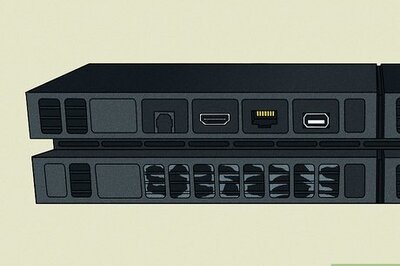
views
THIRUVANANTHAPURAM: If you have the right attitude, disposing of waste should never be a problem. T P Sudhakaran, a computer expert, firmly believes so. At his house in Mangattukadavu, an underground biowaste plant has been working without any hiccups for the last three years. Sudhakaran and his family so religiously tender to the waste disposal in the plant that it saves them much cooking gas, so much so that they buy only two LPG cylinders a year. Sudhakaran is the Training head in Information Kerala Mission and wife Roja works with the Rural Development Department. When they drew up the plan for building a low-cost house, the couple, along with their two children, Sreerag and Srutilaya, sat together with COSTFORD Director Saajan to discuss their dream home.Along with their son’s demand for a garden and daughter’s wish to have a small pond, it was decided that the small plot (four cents) would have a biowaste plant too. A one-metre cube plant was built and tubes from it were drawn to the kitchen to use the cooking gas. There is a special stove that runs only on the gas produced from the biowaste plant.Sudhakaran keeps a kettle to boil on the stove to make tea as he explains the method. ‘’We must have the right attitude to waste first. It has to be segregated neatly into three - plastic, bottles and kitchen waste. And only the kitchen waste should be dumped. It should be done with care and on a daily basis. Follow the basic rules and there would not be any stench or collapse of the plant,’’ he says. The outer lid, which is the only pointer to a biowaste plant, should be opened, waste (collected in a bucket) dumped into it and a small bucket of water needs to be added. Except acidic items like lemon and tamarind and plastic, anything could be dumped.Sudhakaran brushes aside the general complaints against biogas plants as baseless. ‘’The cooking gas stove which runs on the fuel from the biowaste plant does not smell. We have also linked our toilet waste to the plant, even then it is safe,’’ he says. It was under a subsidy plan of Khadi Commission that Sudhakaran had installed the plant three years ago at a cost of ` 12,000. Initially, buckets of cow dung were added to precipitate bacteria reaction, he says. A close neighbour also ‘gifts’ the family with waste twice a week. ‘’The more the waste, the more gas is generated. So, we are only happy,’’ he smiles. And adds that a small residential colony could easily pool money and install one for common use. Or hotels could go in for larger capacity ones and use the gas for cooking. His house also provides other examples of cost-effective uses of energy. Like the five solar bulbs and the solar water heaters they use. The ‘choodarapetti’, in which rice is kept for cooking, is another example.Sudhakaran shows in his own way that simple steps can save a lot of headache, and money too.
















Comments
0 comment